The UK is fast becoming a nation of obsese children living in polluted cities. Cycling to school is often mentioned as a great way to get more kids active and reduce the number of cars on the road.
However, being brutally honest, the prospect of cycling to school is terrifying for most parents because the roads often aren’t safe and the air quality is poor.
Numbers are low, with very few children (approx 2%) actually cycling to school.
So what to do? Do you shrug your shoulders and continue to drive them to school?
Or do you stand up and demand that your child has the right to cycle safely to school? After all, in The Netherlands 49% of primary school children and over 75% of secondary school pupils bike to school.
But how do you go about this?
Every school is different and there is no one-size fits all solution.
Sadly it takes hard work and perseverance, but as more parents, teachers and children are standing up and demanding change, we thought it would be useful to collate the techniques that have worked for others, and provide links to resources you can use in your school.
If you have any additional experiences to add, please leave a comment at the end of the post.
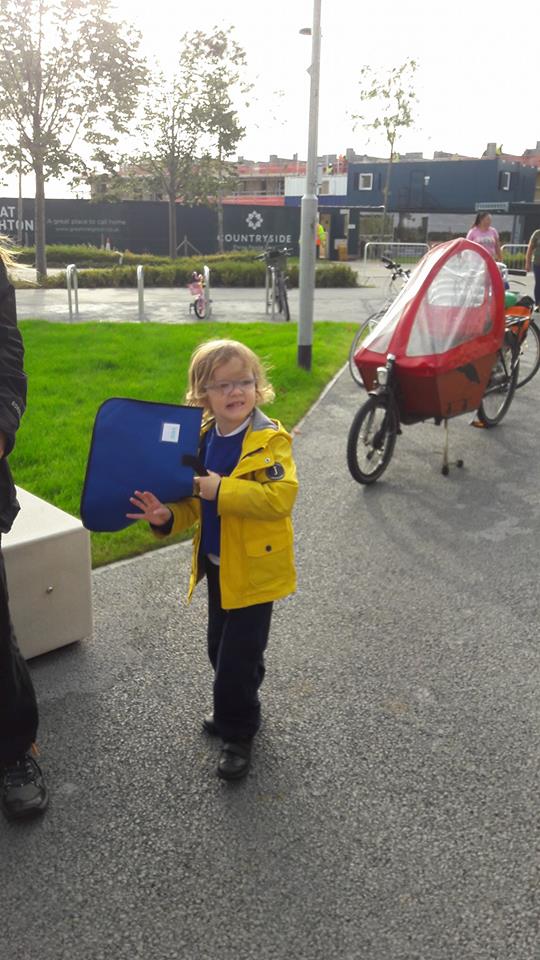
Encouraging cycling to your school: Getting started
Whilst it’s possible to do some or all of the suggestions on this page by yourself, it’s much easier, effective and fun to have a group of people working on it.
Setting up a small steering group can help drive change much more quickly.
Depending on the size and type of school, you could draw membership from parents, school governors, staff, pupils, PTA, local residents and local cycling campaign groups.
Don’t reinvent the wheel
Lots of work has already been done to make it easier to cycle to school, so don’t reinvent the wheel.
Reach out to others, learn from their mistakes and take forward their successes. Share, collaborate and give credit where it’s due.
Here at Cycle Sprog we’ve made a detailed guide to cycling to school, to help parents thinking of making the switch. We go into quite a lot of detail around route planning and preparation, as we know it can be quite overwhelming thinking about cycling for the first time. Download it yourself, or send the link to your friends and family to encourage them to give it a go.
There are national organisations and schemes that have lots of resources to help get you started:
Across the UK there is Sustrans who work to promote more cycling and walking.
School Streets are a really great idea, and have really taken off in London, with over 300 schools in the process of, or having been, set up. This is supported by Mums for Lungs who are a great place for other areas to look for inspiration.
For schools in Wales, there is the Active Schools Travel Award.
In Scotland, register your school for the Cycle Friendly School programme which will provide you with lots of useful resources.
In Northern Ireland schools can sign up for the Active Schools Travel Programme.
If you are in London check if your school is signed up to the TFL STARS scheme (Sustainable Travel: Active, Responsible, Safe) and help them work towards being a Gold accredited STARS school.
All other schools in England (outside London) can sign up free for the Modeshift STARS national schools awards scheme.
You can check to see whether yours is one of the 2,000 schools around England and Wales which are located near roads with illegal and dangerous levels of emissions from diesel cars. If it is, use this fact to add urgency to your campaign.
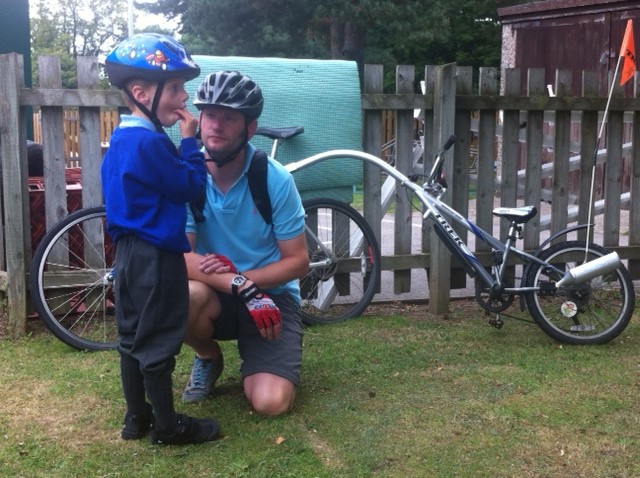
Getting more children to walk and cycle to school
Does your school have safe routes to walk or cycle to school that aren’t being used?
Sometimes a lack of confidence, perceived lack of time, or just plain inertia stops people from choosing more active travel choices.
Making cycling and walking easier and fun can help to create momentum.
- There’s a growing number of bike buses springing up around the UK. See “Guide to setting up and running a bike bus” from Scottish Cycling or follow “The Bike Bus” on Facebook to see how one group is making this happen in Warwick.
- A walking bus is a good way to start reducing the reliance on the car if people aren’t ready to make the move to a bike bus. Children meet up at a prearranged point and walk together, supervised by a rota of parents. Many local councils have details on how to arrange a walking bus – check your local school transport site. Further information can also be found at WalkingSchoolBus.org
- Just do it – if you/ your child cycles to school, others may well follow suit. If teachers cycle to school, this can send a powerful message to pupils
- Create a cycling buddy scheme to help families who are nervous about cycling, or who don’t know the safe routes to school. You can arrange to meet up and cycle together until they are confident to do the journey alone
- Take part in some of the nationally organised cycling campaigns:
Sustran’s Big Pedal – a nation wide competition to get kids cycling to school – usually takes place in March or April each year
Sustran’s Bike to School Week – a nationwide week to encourage kids to cycle to school – 27th September – 1st October 2021
Bike Week 2022 is Monday 6 June to Sunday 12 June 2022
- Get together with other cycling parents, or a local bike shop, and run a “How to” session, to discuss the various options in terms of bikes, accessories and clothing. The Hop Onboard Project in London did this for a while in London. You can team up with other schools and community groups for this
- Arrange a “Doctor Bike” session where a local bike mechanic comes in and checks over all the kids (and family) bikes
- Ensure there is adequate, secure cycle parking. You may need to seek funding from the local council or you could ask a local bike shop to sponsor the bike shed
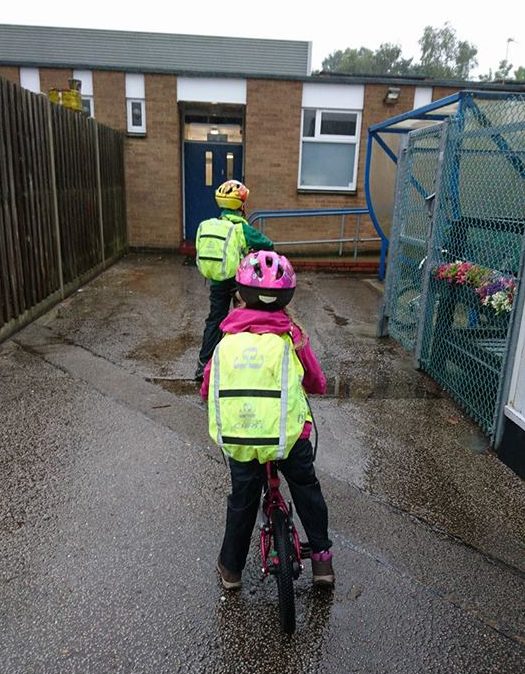
- Get a pump track built on the school grounds, so children can ride their bikes during and out of school hours
- If you are in England, your school may well have received an additional School Sports Premium, which can be spend on active travel to school
- Create your own Facebook Group to encourage parents to communicate about family cycling, and plan routes and rides
Get the kids wanting to cycle to school
Children tend to have a brilliant sense of what is right and wrong, especially about the environment, their own future and the health and wellbeing of their family.
Harnessing “pester power” is a great way to help parents change their behaviour.
You could work with the teaching staff and the PTA to:
- Invite speakers to assembly to explain the benefits of active travel to school and the problems associated with driving to school. Your local council road safety team, Sustrans ‘Bike It’ officer (if you’re lucky enough to have one) or local cycle campaigns can help
- Run a “Big Shift competition” to encourage more active travel to school for a week
- Run a longer term points based incentive scheme for walking, scooting or cycling to school
- Ask the children to make some drawings reminding parents not to park outside the school gates and display these on the gates
- Ask the children to make a map showing safe walking and cycling routes to school
- Get the children to look at these issues themselves. One group of school children produced this report
- Arranging Bikeability courses will help to give children the skills needed to cycle to school, as well as a reason to arrive at school by bike
- For younger children, learning to ride a balance bike can be incorporated into the curriculum
- Set up a Go-Ride School club to provide cycle coaching
- Have cycling champions in each class, who meet regularly to devise the next initiative
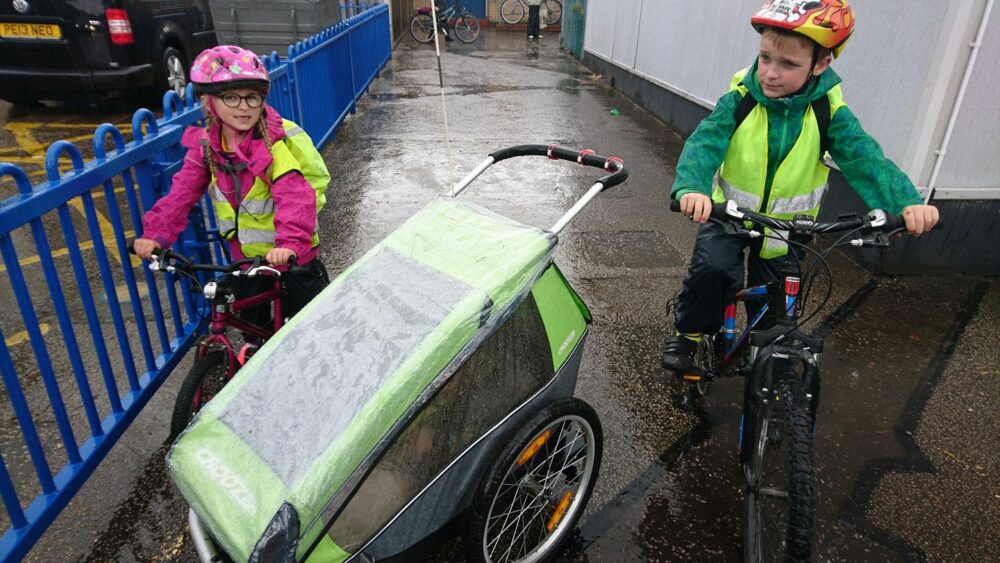
Making the school entrance safer for cyclists
If your school entrance is a chaotic mass of cars and SUVs, making it dangerous for children arriving on foot or by bike, then there are a steps you can take to try and improve things.
If you can sort out the school entrance, then you may find it easier to get parents to consider more active travel choices.
Steps you can take to improve your own school include:
- Set up a School Street (a road outside a school with a temporary restriction on motorised traffic at school drop-off and pick-up times. The restriction applies to school traffic and through traffic) – there’s an excellent Schools Street website which tells you how to go about this. You’ll probably need to get your local council involved, so being able to show a demand from parents is helpful.
- Regularly communicate to the parents and tell them where they can and can’t park and why
- Explain to parents the dangers of excessive pollution near the school gate
- Ask your local Police liaison officer to help draft a letter to be distributed to parents over the importance of road safety, and where they can and can’t park
- Ask parents to pledge not to drive up to the school gate, leaving it safer for staff and children arriving by bike, foot and scooter
- A windscreen sticker for those that make the pledge can help remind them of their pledge
If parents refuse to cooperate, then it may be necessary to take action to ensure the school entrance is kept clear
- Some schools have parents, teachers or pupils marshalling the front of the school
- If unsafe and illegal parking persists, or the offenders become aggressive, ask the local police to do random checks before and after school
- Having a ‘lollypop’ person on duty outside the school can help with parking enforcement and allowing a safe passage into the school for children on foot, scooter or bike. This is an expensive option and you would need to persuade your local council that the traffic levels and risks to safety justified the investment
- Some councils have started to implement no-parking zones around some of the worst affected schools. There is currently no national scheme for this, but examples can be found in Havering, and Hackney.
Improving routes to school
In an ideal world every school would have a safe cycle route from every home all the way to the door, and of course this is something we should all aspire to.
Getting investment decisions takes time, and it’s best to work in collaboration with other schools and with active travel / cycle campaigning organisations in your area.
This is the most important part of getting more children to cycle to school. If there was a national cycling infrastructure, such as in the Netherlands and Denmark, then most of the actions above would be obsolete.
This post by Rachel Aldred has details of what makes cycling infrastructure safe for children to ride on which can be helpful with any discussions you have with your local authorities.
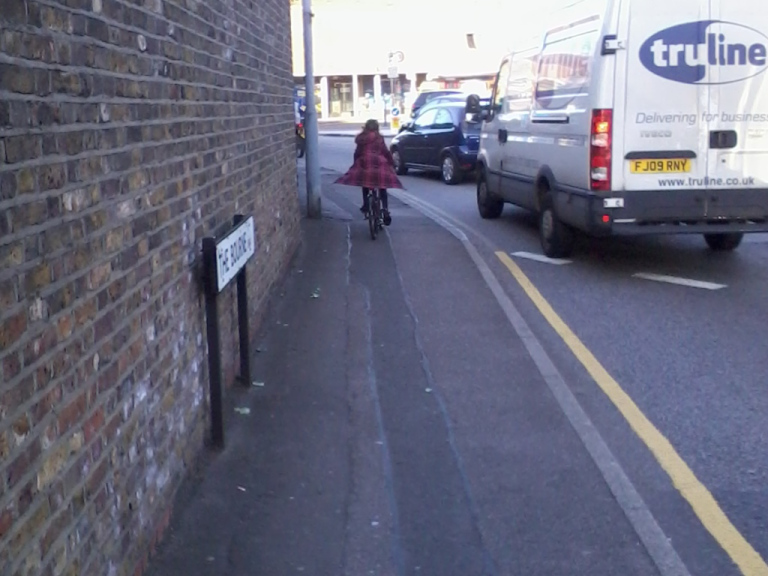
A few ideas to get things moving include:
- Invite councillors, MP and transport engineers to accompany you on the school run
- Get the Parking Enforcement Team (aka Traffic Wardens) to visit the area and feedback on how to improve the local area – they have hands on experience and can help you shape your demands of the local council
- Share examples of good practice with your local council teams
- Get actively involved in campaigning for better cycling provision throughout your local area
- Talk to the press and use social media to promote everything you’re doing (this is a good example of how one tweet can get things moving – keep watching as it’s about 10 seconds into the film clip)
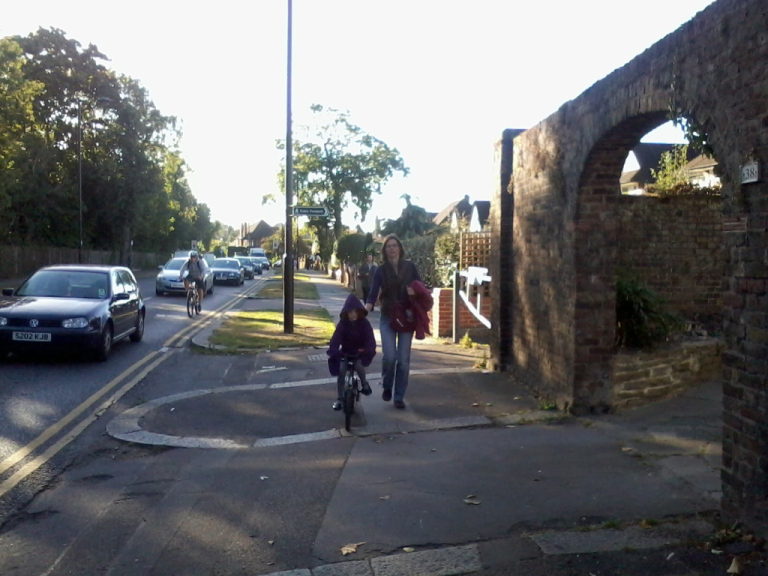
These are just some of the many things that can be done to help increase cycling to school.
If you have any more examples, or would like to share a case study to inspire others, please leave a comment below.
With thanks to cycling campaigner and mum of two Sylvia Gauthereau for the majority of the content for this article, and to Sally, Clare, Eleanor and Sarah from the Family Cycling UK Facebook Group for the photos
Other articles you may find useful:
- Tackling the problem of dangerous parking outside school
- Breaking news – kids don’t melt in the rain
- Today was our school’s annual Bike It Breakfast
- Be bright on your bike now winter is here
- Kids winter cycling jackets for cycling to school all year round
- The best bike lights for kids
- How to get balance bike lessons at your school
- How to start cycling to school with kids
- Cycle to School Week 2023
This post was first published in November 2017 and updated in January 2022 to update the links and dates for 2022 events.
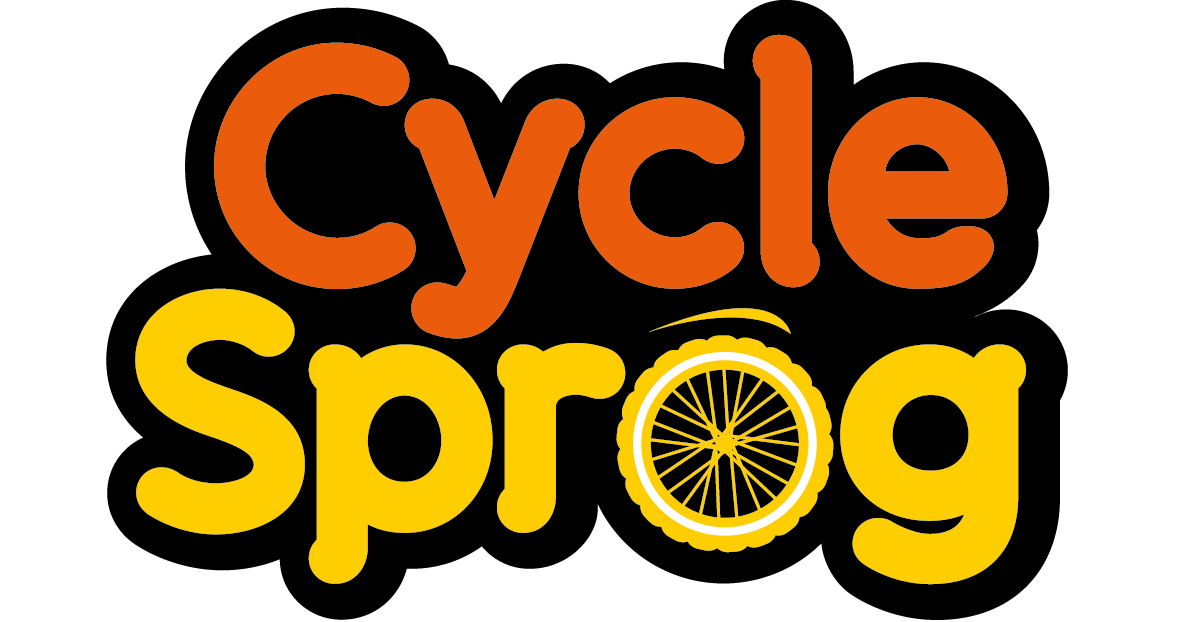
Comments
Hi,
I have ridden my children to school for 5 years and I am still waiting for someone else to join in. There are cycle lanes that run right past the school but these are often quite busy with the high school children, and the high school children do not demonstrate any cycling awareness or courtesy, they haven’t been drilled by parents on the ways to ride kindly and with respect to the pedestrians they share the space with (nevermind taken on the latest changes in legislation). I don’t know where to start, but I really want to make the high school kids pay more attention when they are riding past small children, and hope that it might help reduce anxiety in the parents. I would also like to encourage more parents to realise they don’t have to be “super” mum/dad to ride to school and work, just happy to give it a go, even if it is only for the summer months (/week!!). I feel if there was a group of keen cyclists that could tackle the high school kids (some cool bikers- that could stop and educate e.g. wear helmets, slow down in crowds, don’t overtake on the pedestrian side of the cycle path when there are small children around) that might help. Following covid (so many kids have now got bikes, but not the road sense or manners) I am worried that when the good weather hits we might have more riders out there which could lead to more accidents. Is there a national cycle to school day? Everyone brought their bikes for cycling proficiency, is there anyway of getting kids in primary to have to do a minimum number of days cycling before they can have the certificate? Or letting parents know that it is experience that counts? I understand the weather is an issue, my girl was allowed to wear shorts to school so we took a spare pair to swap in the toilets, and if it was really bad some spare shoes (pe pumps) and socks, school can be very forgiving when it comes to children trying to be eco-friendly by cycling to school.
I’d like to do more, but there is definitely an apathy to cycling where I am despite the very short distance to school (I pass a number of parents driving their kids to school on my way as they live closer to school than we do!). Any suggestions or groups that might help with ideas would be greatly appreciated, I wouldn’t mind if the car parking at my school was plentiful, but it really isn’t, it’s minimal and dangerous (People drive onto verges blocking clearways) and if fewer people drove it would be much better. But convenience is a big issue and people are electrons.
We have become increasingly car dependent because our roads don’t have safe car separated spaces for children to cycle so they don’t – it’s too dangerous. This perpetuates car dependency and unhealthy lifestyles. Town/Village centres that are narrow should become 20mph shared zones and grass verges between villages/communities should be converted into cycle paths. It’s a no brainer. We need longer term vision for cycling-it’s not just about cycling for commuters.
Well said Rachel! Couldn’t agree more. Karen
Hi, I’m trying to find a way for my kids to cycle to school (with me) but it has rained every day for a fortnight. (Northern Ireland).
What is the red bike cover thing in the first picture please because that looks like a game changer? My girls have to wear skirts so getting soaked through with no changing facilities isn’t an option.
I hope you can help. Thanks in advance.
Hi Michelle, Riding through the rain is always challenging. The cover you can see is on a cargo bike – it fits over the body of the bike. I’m not aware of anything like that which fits onto a standard bike I’m afraid. Are you a member of the Family Cycling Facebook Group? That’s a good place to pose questions to find out how other people are coping with the same thing. Thanks for getting in touch, Karen